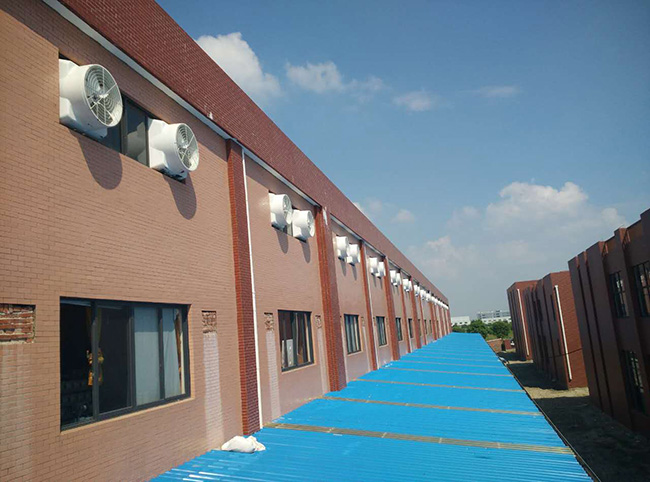
Industrial characteristics: VOCs emissions: benzene, toluene, xylene, styrene, butyl acetate, trimethylolpropane triacrylate, 2-heptanone, hydroxycyclohexyl phenylmethyl ketone, dimethyl polymer, -triazine and ethylene oxide, hydroxyethyl methacrylate, pentaerythritol tetraacrylate selection of treatment options Fundamentals: Selection of treatment schemes is based on the composition of the exhaust gas (whether it contains water, solid, oily substances, and the degree of difficulty in treatment), concentration (high or low), and discharge form (continuous or intermittent discharge). The following conditions are suitable for high temperature plasma incineration: high organic content, complex composition, flammable and explosive (butadiene, etc.), more difficult to decompose substances such as carbon disulfide, containing particulate matter, oily matter, continuous large-dose emissions of industrial waste gas. Such as gravure printing, plastic printing, painting, chemical synthesis, petrochemical, flavor, spice and other industries. Cyclone dust removal devices need to be added in the following cases: industrial waste gas containing particulate matter, such as coating industry waste gas. High-temperature plasma incineration technology: High-temperature plasma incineration technology is high-frequency (30KHz) high-voltage (100,000 volts) high-power power supply under specific conditions of shaped charge discharge. Industrial waste gas rises sharply from room temperature to 3000 degrees high temperature in the reactor. Under the dual action of high temperature and high potential, the organic pollutants (VOCs) are instantly ionized and completely cracked. After high temperature plasma incineration, organic compounds (VOCs) in industrial waste gas are cracked into carbon, carbon dioxide, water vapor and other elemental substances. Characteristics of high temperature plasma incineration equipment: Powerful power and professional design make industrial waste gas instantly become more than 3000 degrees of high temperature plasma, the removal rate of harmful substances is more than 98%, in line with the national emission standards. Stainless steel integrated structure, corrosion resistance, safe and reliable, easy maintenance. Intelligent remote control does not require full-time staff to be on duty. Traditional RTO technology: the traditional natural gas incineration method to treat industrial waste gas consumes a lot of natural gas, oxygen, carbon monoxide, carbon dioxide and other harmful gases, low energy efficiency ratio, narrow application area. (Flammable and explosive) We first proposed the concept of "high temperature plasma incineration" (invention patents), is the only master of the technology and practical application of the enterprise (worldwide). It has opened up a new way for industrial waste gas treatment. Compared with the traditional RTO (natural gas incineration), the high temperature plasma incineration technology has the following advantages: 1. Continuous and uninterrupted treatment of waste gas (natural gas RTO is intermittent mode of operation), which is particularly important in the application of waste incineration tail gas and gravure printing organic waste gas treatment. 2. Broad spectrum: It can deal with industrial waste gas with high concentration, complex composition, flammable and explosive, and contains a lot of water, solid and oily substances to achieve discharge standards. 3. No consumption of natural gas, no carbon emissions, no valves and other moving parts, can be trouble-free, uninterrupted operation for tens of thousands of hours. 4. Low wind resistance, low energy consumption: 20,000 cubic meters per hour gas RTO treatment, in order to overcome ceramic regenerator wind resistance requires a power consumption of 90 kilowatts of the fan. The high-temperature plasma incinerator (25 kW) that processes 20,000 cubic meters per hour, together with the induced draft fan (21 kW), consumes only 46 kW of power. When the emission concentration of VOCs is lower than 200 mg/m3, the power consumption per 10 000 m3 is only 10 kW with low power density and high temperature plasma treatment equipment. Regardless of investment or operation cost, this scheme is much better than the concentrate adsorption + RTO incineration scheme. 5. High energy efficiency ratio: energy saving, high temperature plasma equipment exhaust outlet temperature, than the inlet temperature of exhaust gas only increased by tens of degrees. 6, good treatment effect: dioxins and other difficult to deal with substances, instantly decompose completely, achieve discharge standards. (Waste incineration exhaust emissions dioxin problem is an ideal solution) 7, ozone-free emissions (low-temperature plasma equipment ozone emissions problems). 8. Economical application: The same specifications of high-temperature plasma equipment, the price is less than half of the gas incineration RTO, operating costs less than half. 9, small footprint, high degree of automation, saving manpower and low operating cost. 10, there will be no two pollution. No smell, this is an important consideration for densely populated areas. 11. Natural gas incineration RTO costs too much, consumes a lot of natural gas and oxygen, increases carbon dioxide and carbon monoxide emissions, and has secondary pollution concerns. It can not meet the increasingly stringent environmental protection standards. Because of its working mechanism and structural defects, natural gas incineration needs to consider the problem of explosion-proof in inflammable and explosive places or in the treatment of waste gas containing combustible components. Safety problems caused by leakage may exist in natural gas transportation and storage. The application of high temperature plasma incineration technology in industrial waste gas treatment is an epoch-making technological change. High temperature plasma incineration technology will gradually replace RTO and become a new industry.